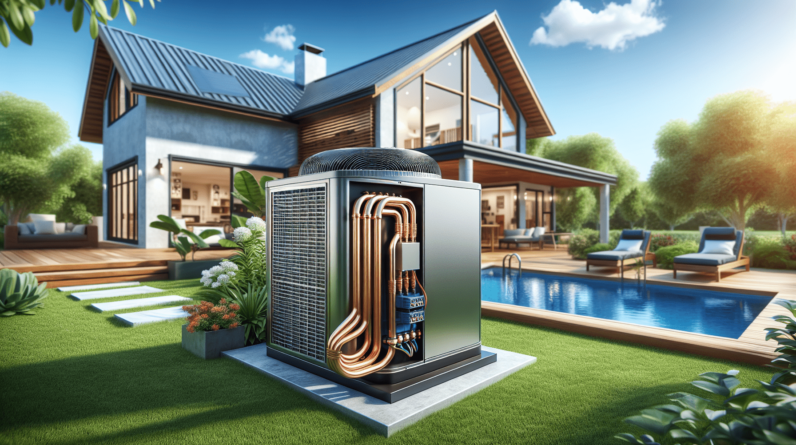
Hey there! Have you ever experienced that sudden surge of panic when all the lights flicker and your appliances start acting up? Electrical surges can be quite frustrating, not to mention potentially damaging to your valuable electronics. But worry not, because in this article, we’ll explore some effective solutions to tackle those pesky electrical surges head-on and keep your devices running smoothly. So, let’s jump right in and discover how you can put an end to those unwanted power disturbances!
Causes of electrical surges
Electrical surges can be caused by various factors, and understanding these causes is important in effectively solving the issue. Here are the common causes of electrical surges:
Power grid issues
One of the main causes of electrical surges is problems with the power grid. These issues can occur due to factors such as faulty transformers, fluctuating power supply, or sudden power outages. When the power supply becomes unstable, it can lead to surges that can damage your home appliances and electronics.
Faulty wiring
Another common cause of electrical surges is faulty wiring within your home. Over time, wiring can become deteriorated or damaged, leading to improper flow of electricity. This can cause surges, as well as other safety hazards such as electrical fires. It is crucial to address any wiring issues promptly to prevent further damage.
Lightning strikes
During a thunderstorm, lightning strikes can cause power surges in your electrical system. These surges can enter your home through power lines or utility poles, and can wreak havoc on your electrical appliances and electronics. Investing in surge protection devices can help mitigate the damage caused by lightning-induced surges.
Malfunctioning appliances
Faulty or malfunctioning appliances can also be a source of electrical surges. Appliances with worn-out cords, defective wiring, or faulty circuitry can cause sudden spikes in electrical current, leading to surges. Regularly inspecting and maintaining your appliances can help identify any potential issues and prevent electrical surges.
Signs and symptoms of electrical surges
Identifying the signs and symptoms of electrical surges is crucial in diagnosing the issue and finding effective solutions. Keep an eye out for the following indicators of electrical surges:
Flickering lights
If you notice your lights frequently flickering or dimming for no apparent reason, it could be a sign of electrical surges. These surges can disrupt the flow of electricity, causing the lights to momentarily lose power. This can be a nuisance and can potentially damage your light fixtures over time.
Intermittent power loss
Experiencing intermittent power loss, where the electricity in your home goes off and on unexpectedly, is a clear indication of electrical surges. These surges can cause the circuit breakers to trip, cutting off power temporarily. If this issue persists, it is important to address it promptly to avoid any damage to your electrical system.
Tripped circuit breakers
Another sign of electrical surges is frequently tripped circuit breakers. If you find yourself constantly having to reset tripped breakers, it may be a result of power surges caused by various factors. It is important to investigate the cause of these surges to prevent further damage to your electrical system.
Damaged electronics
One of the most alarming signs of electrical surges is damaged electronics. If your electronic devices, such as televisions, computers, or stereos, suddenly stop functioning or exhibit unusual behavior, it could be due to a power surge. Surges can cause irreversible damage to sensitive electronic components, so it is crucial to protect your devices with surge protectors.
Understanding surge protectors
Surge protectors are essential devices that help safeguard your electrical appliances and electronics from the damaging effects of electrical surges. By diverting excess voltage away from connected devices, surge protectors act as a defense mechanism against power surges. It is important to understand the different types of surge protectors, how they work, and how to choose the right one for your needs.
Types of surge protectors
There are various types of surge protectors available in the market, ranging from basic power strips with surge protection to whole-house surge protectors. Power strips with surge protection are the most common and affordable type of surge protectors. They are ideal for protecting individual devices or small electronic setups. Whole-house surge protectors, on the other hand, are installed at the main electrical panel and provide protection to all the devices connected to your home’s electrical system.
How surge protectors work
Surge protectors work by redirecting excess electrical voltage away from sensitive devices. They typically contain metal oxide varistors (MOVs) or gas discharge arrestors (GDAs) that absorb and dissipate the excess voltage. When a power surge occurs, the surge protector detects the excess voltage and routes it away from the connected devices, preventing any damage. It is important to note that surge protectors have a limited lifespan and should be replaced every few years or after a significant surge event.
Choosing the right surge protector
When choosing a surge protector, there are several factors to consider. Firstly, consider the joule rating, which indicates the surge protection capacity of the device. Higher joule ratings provide better protection against larger surges. Additionally, consider the number of outlets and the type of devices you will be connecting to the surge protector. It is crucial to select a surge protector that can accommodate your specific needs and provide sufficient protection for all your devices.
Preventive measures
While solving electrical surges is important, taking preventive measures can help minimize the occurrence of surges and protect your electrical system. Here are some preventive measures you can take:
Taking care of electrical appliances
Properly maintaining your electrical appliances can go a long way in preventing electrical surges. Regularly inspect cords, plugs, and outlets for any signs of wear or damage. Avoid overloading outlets, and ensure that appliances are plugged into properly grounded outlets. Following the manufacturer’s instructions for use and maintenance can also help prolong the life of your appliances.
Proper grounding
Ensuring that your electrical system is properly grounded is essential in preventing electrical surges. Grounding provides a path for excess electrical current to dissipate safely into the ground. If your home’s electrical system is not adequately grounded, it can increase the risk of electrical surges. Consult a professional electrician to ensure your electrical system is properly grounded.
Regular inspection and maintenance
Regularly inspecting your electrical system, including wiring, circuit breakers, and outlets, can help identify any potential issues before they escalate into larger problems. Consider scheduling periodic inspections by a licensed electrician to ensure the safety and efficiency of your electrical system. Promptly addressing any identified issues can prevent electrical surges and ensure the longevity of your electrical system.

Surge protectors
Investing in quality surge protectors is one of the most effective preventive measures against electrical surges. Install surge protectors at key locations, such as power outlets or at the main electrical panel, to provide comprehensive protection to your appliances and electronics. Remember to regularly replace surge protectors as recommended by the manufacturer to maintain optimal surge protection.
Solving electrical surges caused by power grid issues
Electrical surges caused by power grid issues can be particularly challenging to solve on your own. Here are some steps you can take to address surges caused by power grid issues:
Contacting the utility company
If you suspect that the electrical surges are caused by power grid issues, it is important to contact your utility company. Explain the symptoms you are experiencing and request them to inspect the condition of the power lines and transformers in your area. The utility company can take appropriate measures to address the issue and prevent further electrical surges.
Temporary power stabilizers
In situations where power grid issues are out of your control or the utility company’s response time is longer, you can consider using temporary power stabilizers. These devices, also known as voltage stabilizers or line conditioners, can help regulate the flow of electricity and protect your appliances from surges. However, they provide temporary solutions and should not be considered a permanent fix. It is essential to address the underlying power grid issues for a long-term solution.
Repairing faulty wiring
Faulty wiring is a common cause of electrical surges and requires professional attention. Here are the steps to follow to repair faulty wiring:
Identifying the problem
To repair faulty wiring, it is crucial to first identify the problem areas. Look out for signs such as loose or damaged wires, burn marks, or unusual odors coming from outlets or switches. If you are uncertain about identifying the problem, it is best to consult a professional electrician for a thorough inspection.
Hiring a professional electrician
Repairing faulty wiring should only be performed by a licensed electrician. Attempting to fix wiring issues on your own can be dangerous and may lead to further damage or electrical hazards. Hire a qualified electrician who can diagnose and repair the faulty wiring safely and efficiently.
Replacing damaged wiring
Once the problem areas have been identified, the electrician will proceed with replacing the damaged wiring. They will ensure that all connections are done correctly and meet the necessary safety standards. After the repairs are completed, it is important to have the electrical system inspected to ensure that it is functioning properly and that the electrical surges have been resolved.
Protecting against lightning strikes
Lightning strikes can cause severe damage to electrical systems if proper protection measures are not in place. Here are some ways to protect against lightning strikes:
Lightning rods
Installing lightning rods on your property is an effective measure to protect against lightning strikes. Lightning rods are designed to attract and conduct lightning safely to the ground, reducing the risk of damage to your electrical system. Consult a professional lightning protection specialist to assess your property and install lightning rods in strategic locations.
Grounding systems
Proper grounding is essential in protecting against lightning strikes. Ensure that your electrical system and any metal structures on your property, such as fences or satellite dishes, are adequately grounded. Proper grounding provides a safe path for lightning to dissipate into the ground, reducing the risk of damage to your electrical system.
Handling electrical surges from malfunctioning appliances
When dealing with electrical surges caused by malfunctioning appliances, it is important to take immediate action to prevent further damage. Here are the steps to follow:
Identifying the problem appliance
If you suspect a malfunctioning appliance is causing electrical surges, start by identifying the problem appliance. Unplug all appliances and plug them in one by one, monitoring for any surges or unusual behavior. This will help identify the specific appliance that is causing the issue.
Repairing or replacing the appliance
Once you have identified the problem appliance, assess if it can be repaired or if it needs to be replaced. If the appliance is under warranty, contact the manufacturer for repair or replacement options. If it is not under warranty, consider consulting a professional appliance repair technician to assess and fix the issue. In some cases, it may be more cost-effective to replace the appliance, particularly if it is old or the repairs are extensive.
Resetting tripped circuit breakers
Tripped circuit breakers are a common occurrence during electrical surges. Here is how you can reset a tripped circuit breaker:
Locating the tripped breaker
The first step is to locate the tripped breaker. Open your electrical panel (also known as a breaker box) and look for any breakers that are in the “off” position or the middle position between “on” and “off.” The tripped breaker will be in this middle position.
Identifying the cause of overload
Before resetting the tripped breaker, it is important to identify the cause of the overload. Look for any visible signs of damage or excessive use of power on the circuit, such as multiple high-powered devices connected to a single outlet. If you cannot identify the cause, or if it seems unsafe, consult a professional electrician for assistance.
Resetting the breaker
To reset the tripped breaker, firmly push it to the “off” position and then back to the “on” position. You should hear a click when it is properly reset. Once reset, check if power has been restored to the affected area. If the breaker trips again immediately or shortly after resetting, it may indicate a more significant issue and should be addressed by a professional electrician.
Dealing with damaged electronics
If your electronics have been damaged by electrical surges, it is important to assess the extent of the damage and take appropriate action. Here are the steps to follow:
Identifying the extent of damage
Inspect the affected electronics for any visible signs of damage, such as burned components, melted parts, or unusual smells. If the damage is extensive or if you are uncertain about the extent of damage, consult a professional electronics technician for a detailed assessment.
Repairing electronics
If the damage is minor and can be repaired, consider contacting a reputable electronics repair service. They can diagnose the issue and replace or repair any damaged components. It is important to work with professionals who have the necessary expertise and tools to ensure the repairs are done correctly.
Replacing irreparable electronics
In some cases, the damage caused by electrical surges may render the electronics irreparable or the cost of repair may outweigh the value of the device. If this is the case, it is best to replace the damaged electronics. Invest in surge-protected models to prevent future damage from electrical surges.
By understanding the causes of electrical surges, recognizing the signs and symptoms, and taking preventive measures, you can effectively solve electrical surge issues and protect your home and valuable electronics. Remember to consult professionals when needed, and prioritize the safety and proper maintenance of your electrical system.






